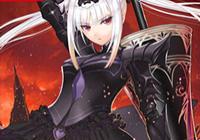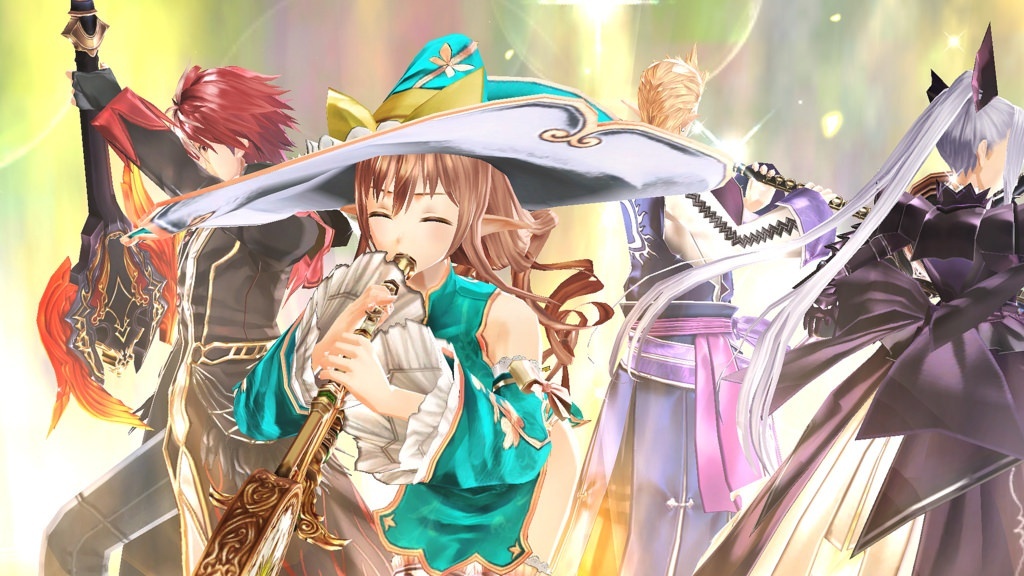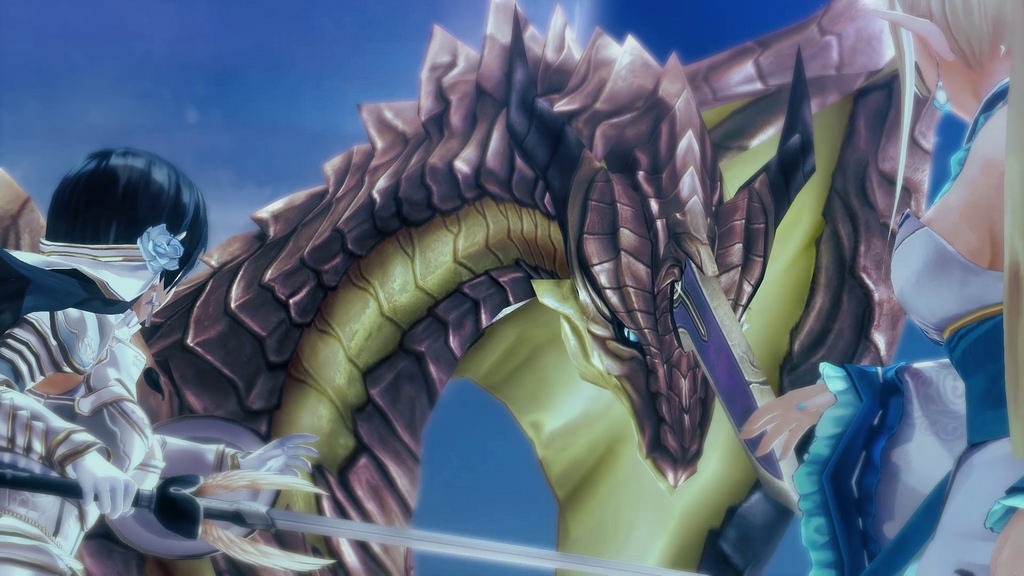Shining Resonance Refrain (Nintendo Switch) Review
By Rudy Lavaux  09.07.2018
09.07.2018

The Shining series was once one of SEGA's two flagship RPG licences in the 1990s, with Phantasy Star being the other. The Shining Force series brought tactical RPG to the West long before Nintendo's own Fire Emblem series did but gamers also saw Shining in the Darkness dabble into the dungeon crawler genre. On Nintendo platforms the Shining Soul series graced the Game Boy Advance in the early 2000s but also an enhanced remake of the first Shining Force also on the same platform and Shining Force Feather came out on the original DS in 2009, although only in Japan. Since then, the series has been mostly confined to Sony platforms with Tony Taka, an erotic manga artist, overseeing character design for all subsequent games up to this day (that explains a lot), including Shining Resonance for PS3, which was only released in Japan in late 2014. Shining Resonance Refrain is a remaster of the same title and finally sees release outside of Japan on PC and all current generation consoles, including Nintendo Switch, which marks the return of the franchise on a Nintendo system.
The world once knew Ragnarok, the great battle of the end of times between Deus and his Drachomachinas, artificial dragons, and the five World Dragons of which the leader, the Shining Dragon, is the only one who survived through the battle and up to this day. In this battle, the Lombardian Empire sided with Deus and the Astorian Kingdom was built by humans on the remnants of the old Kingdom of the High Elves in Alfheim, who sided with the World Dragons. After Ragnarok, things were still tense between the inhabitants but a fragile ceasefire ensured relative peace for the people... until now. The Lombardian Empire's emperor is dying and his daughter Excella would go to any length to prevent his death, including acquiring the powers of the souls of the World Dragons that even disembodied still linger in sacred shrines hidden throughout the land... to grant him immortality, as the Sanguine church believes it possible. However, the soul of the remaining World Dragon, the Shining Dragon, now lives within the protagonist, Yuma, a seemingly wimpy character who is held prisoner by the Empire and experimented on. The adventure thus opens on Princess Sonia Blanche of the Astorian Kingdom, trying to free the fabled boy who holds the Shining Dragon's power within him.
From there, things play out mostly as a traditional action RPG, with mixtures of elements seen in other titles of the same genre. In how it plays, it could be likened perhaps to both the Tales of series for how battles are handled, as real-time 3D action sequences, albeit without the Linear system that locks the character on a single horizontal line of movement, and to The Last Story, since these battles happen not on separate screens but on the exploration field itself. In battle, players are confined within a circular area and touching the edge for long enough triggers an escape. Other than those particular elements, it plays just like a 3D action RPG would, although it does not allow for multiplayer battles, unfortunately. Each character, however, plays using the same basic mechanics but feels different. Each character has base attacks that can be chained with the A button and slower "break" attacks that can be performed by pressing X. Repeated break attacks may break the enemy's guard and put it in a daze for a short while where every attack that connects deals some extra damage. The B button allows for a short distance "dash" movement, while holding down the Y button triggers the guarding stance. Each of these base actions consumes a varying amount of AP - action points - on a gauge that is displayed in front of the playable character's model on-screen so, when it's empty, the character is left vulnerable and must be left to recharge itself. Special techniques and magic performed with the same buttons while holding down the L button do not consume MP, so these can ideally be used while AP is allowed to recharge, to keep chaining attacks for a decidedly satisfying feeling of dynamism to each and every battle that makes even minor grinding sequences (or farming when it comes to enemy drops) a pleasure to sit through. The battle system is really good and has a lot of depth. Indeed, that is not all there is to them.
Each character fights with its signature weapon. While Yuma fights with a scared sword proper to the Shining Dragon itself, every other character is called a Dragoneer, one that can resonate with the power of the Dragon. Dragoneers each fight with a weapon called an Armonic - a mix of a weapon with a music instrument.

This is where the B.A.N.D. system comes into play. A gauge located at the left side of the screen called BPM (Battle Performance Mana), fills in as characters deal damage to enemies in battle for up to three full bars, and that gauge, as long as it holds at least one bar, can be used to trigger an active party member to put on a performance together in battle for additional battle perks, such as zero action point consumption or increased critical hit rate, and so on, and so forth. There aren't many different songs to choose from, but it is a nice additional element that adds depth to the battle system, making it that much less boring. Last, but not least, Yuma can obviously transform into the sacred Shining Dragon himself in battle to wreak havoc on foes for as long as he has MP, while also watching out to not go into berserk mode early on. The battle system really is very satisfying and responsive, although one minor gripe arises when trying to transform into a dragon. Indeed, triggering the B.A.N.D. system is done by pressing R; however, transforming into a dragon is done by pressing R, too, but while holding L down. It seemed while playing for review that even when L was being held down, pressing R more often than not brought up the B.A.N.D menu instead, so it takes a certain timing to button pressing to get it right, which really shouldn't be necessary, but it's easy to get used to.
One of the most peculiar aspects of this JRPG, however, is the absence of actual equipment. No swords, shields, helmets, armour, or anything of the sort to customise playable characters. Rather, the protagonists' armonics can be “tuned” and in turn may have slots on them to fit in “aspects.” Tuning a weapon can only be done when back in Marga, at a specific shop. Doing so grants stat boosts to pretty much any stat that the specific tuning selected influences, based on how much that tuning has been levelled up. That's right – tunings level up separately from the actual character level, although tuning caps at level 30. Upon reaching level 30 on a tuning, typically, a few new “tunings” unlock as a reward for putting in the effort. In addition to stat boosting, what really defines a selected tuning is the specific effects that they add in battle, such as being allowed to chain more basic combo moves or automatic blocking of attacks when no combo is being performed, or adding some additional specific elemental damage to the weapon, and so on. In practice, tunings can really change how a character feels when controlled in battle and can even turn a more magic or physical damage based character into a more versatile one, depending on what stats the tuning affects. Lastly, depending on the tuning selected, but also on the character itself, a certain amount of empty slots open up on the weapon itself to fit in the aforementioned “aspects,” which are kind of like Materia in Final Fantasy VII, although those don't level up.
The effects of aspects can range from simple stat boosts, like “Def+15%” or “Max HP+20%,” to effects in battle, such as dealing more damage to enemy creatures belonging to a certain category, like “dragon” or “humanoid,” and so on. Aspects can either be found in chests, obtained through side-quests, purchased at premium from Liselotte's shop or, and this will be the main way to obtain them, by crafting them from base materials. The latter can both be found lying around the game world as shining objects on the ground, à la Xenoblade Chronicles, or obtained from enemies as random drops.

Tuning and aspects represent the extent of character customisation that is allowed in Shining Resonance Refrain, although one additional separate element does somewhat influence the characters' ability to fight: “Traits.” These are essentially equippable character traits of personality that affect the characters' ability to resonate either with the Shining Dragon's vessel, Yuma, or secondary characters between themselves even. Those unlock during story cut-scenes or can even be found as items in chests scattered around the in-game world but, really, unlocking them involves simply watching as many conversations as possible with each character; mainly intimate one-on-one exchanges. Those come in two main forms: late night meetings and... dates. Although Shining Resonance Refrain is not a dating sim, by any means, there is a definite little bit of Sakura Wars DNA at its core, in that the male hero will spend quite a bit of time developing relationships with the different other playable characters, the vast majority of which are, as expected, very attractive, fit looking anime girls.
Every playable character, once it has joined forces with Yuma and the gang, can be invited to spend some time together before going to sleep at night for a friendly conversation and, as the level of affection of that person towards Yuma builds up, eventually, that person will offer to spend even more time with him the next day, walking around Marga, checking out shops and locales, leading to increasingly romantic scenes. Things never go any further than a little bit of snuggling or confessions of love after enough dates have taken place (this is limited to the girls), and going any further may yet unlock one more trait or two, and then dates never seem to move things any further.
With that being said, characters are very well designed and are a highlight of this game. They do look gorgeous, if perhaps donning the traditional doll like faces common to even current gen JRPGs, and are very well animated and being allowed to see so many interactions, intimate or not, makes them truly loveable, which offsets the otherwise small size of the cast of important characters, the unique hub town to which players will keep coming back a hundred times, and the very small size of the game world to explore. It may seem like the sheer amount of cut-scenes is somewhat there to add filler content at a lower development cost as opposed to actually making the world bigger and more varied and, really it kind of is, but it is worthwhile nonetheless. Making the characters so loveable despite all their cliché JRPG personalities will undoubtedly make JRPG fans, in particular fans of the “anime harem style” of manga-like JRPG stories, stick to the game all the way until the end.
What isn't quite as well done, however, is how the side-quests are handled. Quests are mostly repeatable but there is no way of telling whether an available quest has already been completed or not without walking up to the NPC and asking about it. The game doesn't keep a comprehensive list of completed quests, so talking to NPCs seemingly for nothing is a routine that, if anyone wants to fully complete the game, will have to be repeated on each return to Marga, and this may become irritating very quickly.

This may not be a problem for those just willing to play through it casually and not looking to complete absolutely everything but, for the completionist, this is a problem that could have been so easily solved by adding in a proper quest menu. Instead, pressing the ZR button outside of battle brings up a quest memo of all currently accepted quests and the status of each, but at no moment does the game give any indication of how many have already been completed, for example. This is but one thing that stands out as badly thought out, even more so for a remaster, which means that no thought was spared to overhaul this section for this re-release, but it is one that has stuck for the extent of the playthrough while reviewing this piece of software, so it had to be mentioned.
It is otherwise a rather traditional JRPG that does enough to establish its own style through inventive game mechanics and that offers a decent amount of content to play with, even with a relatively small game world size and some elements like being able to actually visit the inside of buildings being drastically scaled back, more than likely due to budget constraints, but thanks to its colourful cast of characters and decent voice acting, even in English surprisingly enough, though the option to download the Japanese voice over is there for those that still prefer it, makes this title still loveable enough to capture the attention of the player all the way to the end, which is more than a lot of its competitors can say for themselves. It may not be the best JRPG on the system, but still a more than worthwhile investment for die-hard fans of the genre. As for performance, it plays in 1080p30 in docked mode and 720p30 in handheld mode. Both modes display some minor frame drops during more intense fight scenes. Visually speaking, the art style does a lot to make things pleasing as, otherwise, it is a decidedly last gen looking game that looks exactly like the PS3 original on Switch with maybe some slightly higher resolution textures and that runs at a higher resolution than the original when docked.
Strangely, some elements of the scenery that use flat textures seem to have no filtering at all, giving them a blocky appearance when the camera is extremely close, kind of like the more recent Pokémon games on 3DS, which seems like a performance saving measure that should not be called for on Switch at all, so it may be an oversight that may see a fix in the future if enough people notify SEGA about it. Otherwise, overall, under normal play circumstances, it is still a fairly beautiful and colourful title to look at, especially thanks to the beautiful character design. This new version includes all of the content of the PS3 original, plus all DLC, as well as the titular new “refrain” mode, which tells the same story but with new additions in the form of two new playable characters that never sided with the hero's party in the original story. SEGA recommends that mode for those who played the original on PS3, which shouldn't concern that many people outside of Japan, or those who will play-through. it a second time after finishing the original mode which, given how enjoyable this turned out to be, may well prove a useful way to extend replayability for those that will invest their time in this remaster.

Cubed3 Rating
Great - Silver Award

Shining Resonance Refrain has its small irritating bits here and there and turns out to not be a very large scale JRPG, but that doesn't mean that it should be shunned for it. Its smaller scale and relatively simpler structure makes it easier to sink some time into than an even more massive JRPG like the Xenoblade titles, which may be more intimidating as a result of their scope. As for its minor setbacks, they are easily offset by its other intrinsic qualities, chiefly the loveable cast of main characters. Fans of the JRPG genre in its more classical form, but also of manga/anime style adventure stories, should find plenty to enjoy here.

![]() 8/10
8/10
![]() 0
(0 Votes)
0
(0 Votes)
 Out now
Out now  Out now
Out now  Out now
Out now  Out now
Out now Comments
Comments are currently disabled

 Sign In
Sign In Game Details
Game Details Subscribe to this topic
Subscribe to this topic Features
Features





 Top
Top

